Check out our range of stock.
Didn't find what you like?
Send us a message
Found something out of stock?
Send us a message
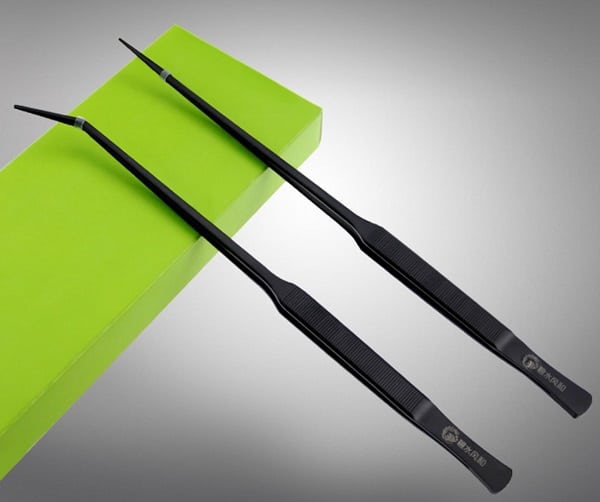
Carbon planting tweezers are a type of tweezers made from carbon steel and designed for planting and harvesting plants, flowers, and herbs. They come in two varieties: straight and curved. The straight tweezers have a straight, thin, sharp edge that is perfect for precision planting and harvesting. The curved tweezers have a curved shape that provides better leverage and control when planting and harvesting, making it easier to work with a variety of plants and herbs. Both types of tweezers are made of a durable carbon steel material that ensures a long lasting, rust-resistant tool that will last for many years.
$29.00
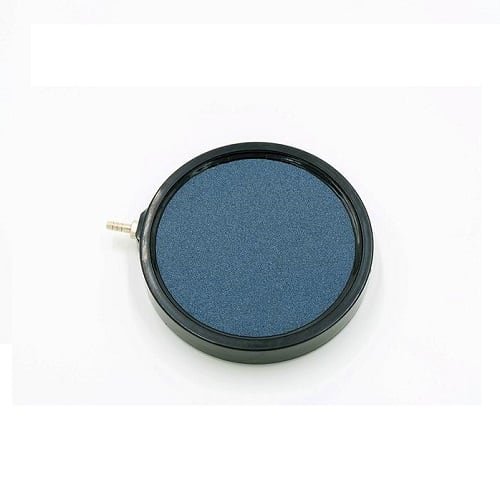
The low flat design of disc air stones provides them with a large surface area with which to produce lots of bubbles and aeration for your aquarium. Size: 132mm in diameter, 20mm high and has a dual sized inlet that fits both 4mm and 8mm air hose.
$17.95
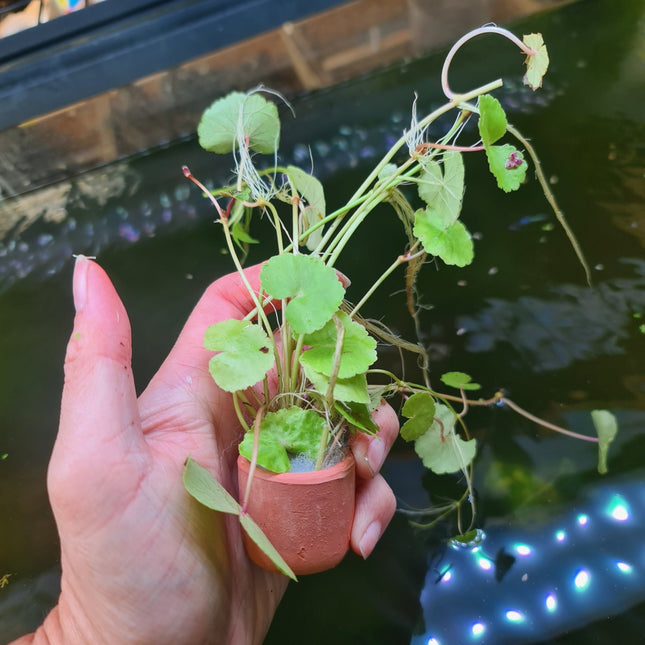
Hydrocotyle Leucocephala originates from the wet marshlands of South America , and also holds the name Brazilian Pennywort. It grows well very well submerged and loves temperatures to be between 18-24C. A fast-growing vine-like aquarium plant with kidney-shaped leaves, Hydrocotyle Leucocephala survives in tanks where other plants fail! It thrives in tanks with or without Co2 added and requires only medium light. In high lights it can become rampant, lower lights make it easier to control. Hydrocotyle Leucocephala looks beautiful intertwined with driftwood. Its delicate leaves are a favourite climbing place for shrimps. Hydrocotyle Leucocephala works particulary well in tanks with Anubias as the two kinds of aquarium plants require similar conditions. Selling in a terracotta pot with 3 to 5 plant let's. These plants should be planted in aqua soil or gravel. Best kept in heights of 30cm tanks We grow this plants in our display tanks.
$10.00

As a species of fern, Ceratopteris cornuta is a great choice for beginners as it is low maintenance and easy to grow. With its characteristic layered and feathery leaves, it adds a beautiful natural touch to any aquarium. This plant can also help oxygenate the water and absorb excess nutrients, promoting a healthier aquatic environment.
$14.00

Also known as Ceratopteris thalictroides "Fein" Fine-leaved Fast growing Not demanding Also suitable as floating plant Ceratopteris thalictroides is an amphibic fern found in many tropical regions of the world in shallow waters and on muddy ground, amongst others in rice paddies. In some tropical regions of Asia the emersed leaves of this species are used as vegetable. In nature, this plant is said to be an annual plant, however, it can be cultivated over several years without problems. The species contains many local forms, and in aquaristics, varietys with more coarsely or finely pinnate submersed leaves are common (photos 1 to 3 show an especially delicate form of C. thalictroides). The species has been known in the hobby for many years, also under the synonym of Ceratopteris siliquosa as well as under the vernacular names of water sprite, Indian fern, Oriental waterfern and water hornfern.Botanists disagree whether Ceratopteris cornuta, originating from Africa, is to be considered a species of its own or a synonym of C. thalictroides. In aquaristics, those plants with coarser lobes/leaflets are generally called C. cornuta, and those with finer leaflets are known as C. thalictroides. It is not clear, however, if those coarser-looking plants are truly C. cornuta or simply a variety of C. thalictroides (in the narrower sense). A third species, Ceratopteris richardii, can only be discerned from C. thalictroides and C. cornuta by the number of spores per sporangium. Moreover, Ceratopteris species are known to hybridise.C. thalictroides is a very fast growing fern and is usually cultivated free-floating on the water surface, like all other Ceratopteris species. Labyrinth fish gladly accept it for building their bubble nests, and it provides fish fry with great places to hide. However, when planted into the ground it grows even better as a submersed plant. C. thalictroides forms large, fine-leaved, light green bushes within a short time, and as it requires a lot of space it is best cultivated in large tanks as solitary plant. Its requirements are not difficult to meet; medium light intensities and CO2 concentrations of under 20 mg/l are sufficient, however, the fern will grow better under intensive light, with additional CO2 and nutrient-rich water.It forms plantlets in the grooves between the lobes of older leaves, like other Ceratopteris species, however, in lower numbers. In order to further the development of these plantlets it is recommended to sever the older leaves from the plant and let them float on the surface.In shallow water and on wet substrates rich in nutrients, C. thalictroides forms emersed leaves, which are finely pinnate, too. Spore-carrying fronds have very narrow leaf tips. Their margins are rolled in towards the underside and thus cover the sporangia (spore capsules). Synonyms Acrostichum thalictroides L., Ceratopteris froesii Brade, Ceratopteris gaudichaudii Brongn., Ceratopteris siliquosa (L.) Copel. Complete botanical name Ceratópteris thalictroídes (L.) Brongn. Family Pteridaceae Genus Ceratopteris Difficulty easy Usage Background, Plant for spawning, Midground, Specimen plant, Water surface Growth very fast pH value 5 - 8 Temperature tolerance 18 - 30°C Carbonate hardness 0 - 21°dKH General hardness 0 - 30°dGH Propagation Proliferating leaves, Spores Can grow emersed? yes Source: flowgrow
$10.00
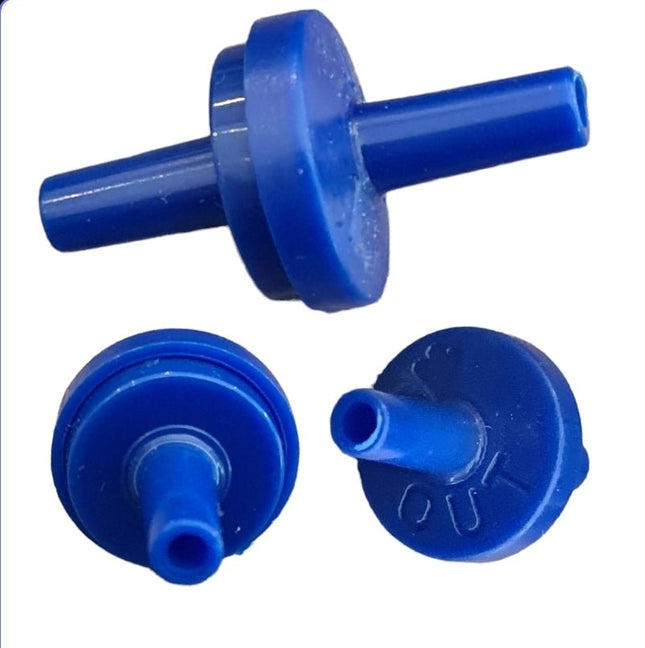
These air valves are simple to use Air goes from the air pump to the in pipe and it goes to the out pipe. These simple tools is necessary as in an event of a power outage water won't travel from your tank to your air pump.
$2.00
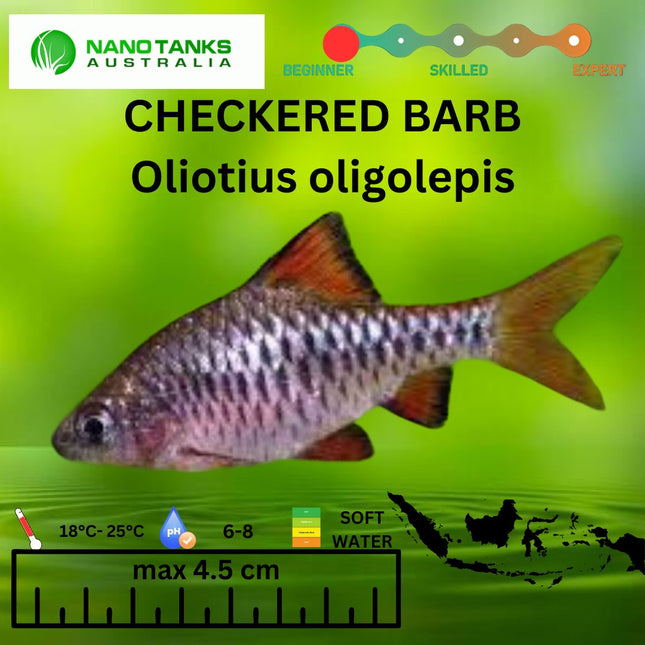
Distribution Apparently endemic to western central Sumatra, Indonesia, but the full extent of its distribution is unclear. The few recent records that exist pertain to lower basins of the Aek Sibundung, Aek Sumuran, and Aek Garoga rivers in Sumatera Utara (North Sumatra) province, with the Batang Gadis drainage and associated National Park possibly representing the northern limit of its range (D. Lumbantobing, pers. comm.). Type locality is ‘Lake Meninju, Sumatra, Indonesia’, which corresponds to the crater lake Danau Maninjau in Sumatera Barat (West Sumatra) province. Maximum Standard Length 40 – 45 mm. Water Conditions Temperature: 18 – 25 °C pH: 5.5 – 7.5 Hardness: 36 – 215 ppm
$8.00
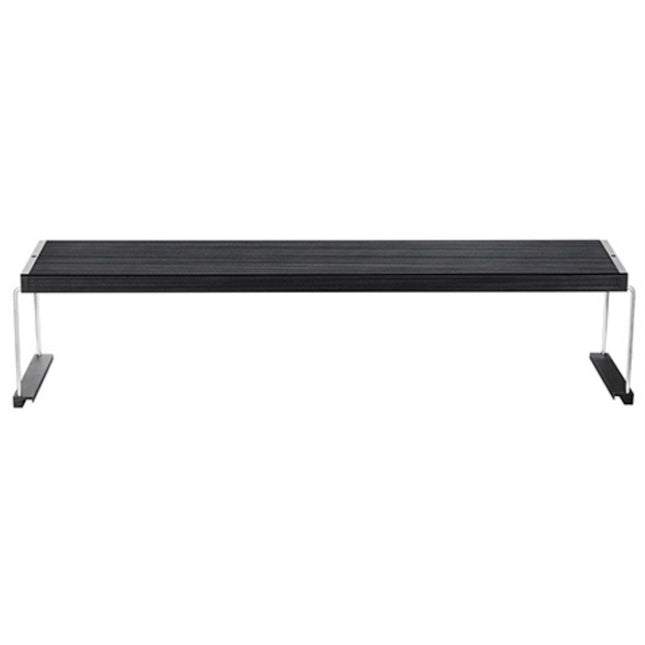
Chihiros’ WRGB II is a series of LED systems, serving the full-color gamut of aquatic plants with its optimized LED design of different colours. It is particularly suitable for aquariums densely planted in need of intense light. The WRGB 2 makes the colours red, green, and blue shine with special intensity. With relatively low power consumption, different variations illuminate the Aquarium complete with a high beam angle and suite aquarium sizes from 30 to 140 cm in length. The lighting system is programmed directly through the “My Chihiros App” and requires no additional commands, which makes a notable difference to the LED WRGB I series. The app offers individual control over the three “R” colour channels ( red), “G” (green), and “B” (blue), as well as individually programmable daily phases. Sunrise and sunset can also be imitated. No need for an external timer because all schedules can be saved as desired. The new Led display Chihiros WRGD 2 Is waiting for you. Nano Tanks Australia has been very impressed with these lights and are using them for our Bucephalandra and Anubias Tanks. They are exceptionally well where plants need to Red Spectrum
$369.00 - $980.00

UP AQUA CO2 Indicator Solution : 10 ml Bottle./ Pack PLEASE NOTE THAT SOME CONTAINERS LOOKS DIFFERENT AND CONTAINS 15mL
$10.95
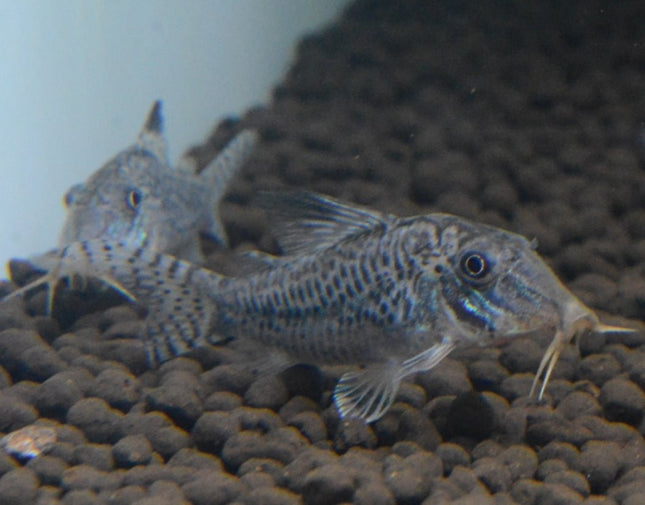
The blacktop corydoras (Corydoras acutus) is a tropical freshwater fish belonging to the subfamily Corydoradinae of the family Callichthyidae. It originates in inland waters in South America, and is found in the Amazon River basin in Ecuador and Northern Peru. It was described by Edward Drinker Cope in 1872. The fish will grow in length up to 1.7 inches (4.4 centimeters). It lives in a tropical climate in water with a 6.0–8.0 pH, a water hardness of 2–25 dGH, and a temperature range of 77–83 °F (25–28 °C). It feeds on worms, benthic crustaceans, insects, and plant matter. It lays eggs in dense vegetation and adults do not guard the eggs. The female holds 2–4 eggs between her pelvic fins, where the male fertilizes them for about 30 seconds. Only then does the female swim to a suitable spot, where she attaches the very sticky eggs. The pair repeats this process until about 100 eggs have been fertilized and attached. The blacktop corydoras is of commercial importance in the aquarium trade industry.
$50.00
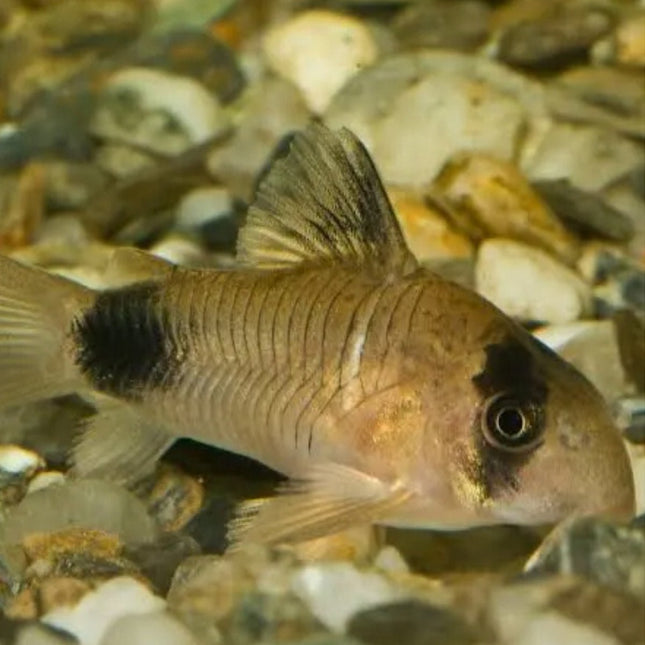
🌿 Calling all aquarium enthusiasts! Say hello to the delightful Corydoras Panda, now available at Nano Tanks Australia! 🐼✨ 🌈 The Corydoras Panda is a charming addition to any nano tank. With its striking black and white markings and playful personality, it's sure to become the star of your aquatic world. 🐼🌿 ✨ These bottom-dwelling catfish not only add visual appeal to your tank but also provide important functions. They are expert algae eaters and diligent scavengers, helping to keep your tank clean and well-balanced. 🌿🐠 📚 Here are some care instructions to ensure your Corydoras Panda thrives in its new home: 1️⃣ Tank Size: Provide a suitable tank with a minimum capacity of 10 gallons to allow for swimming space and proper filtration. 2️⃣ Water Parameters: Maintain a temperature range of 72-78°F (22-25°C) and a pH level between 6.5 and 7.5. Regular water testing and quality maintenance are essential. 3️⃣ Diet: Feed your Corydoras Panda a varied diet of high-quality sinking pellets, flakes, and occasional live or frozen foods. They also enjoy nibbling on blanched vegetables. 4️⃣ Tankmates: Corydoras Panda is peaceful and gets along well with other small, non-aggressive fish. Consider companions like peaceful tetras or small rasboras. 5️⃣ Hiding Places: Provide plenty of hiding spots like driftwood, caves, or dense vegetation to create a secure environment for your Panda Corydoras. 🏢 At Nano Tanks Australia, we take pride in offering top-quality fish for your nano tanks. Each Corydoras Panda is carefully selected for health, vibrant colors, and energetic behavior, ensuring you receive a fish of exceptional quality. 💪🌈 🔍 Explore the joy of owning a Corydoras Panda and witness their graceful movements in your nano tank. Visit our store today or browse our online collection to find the perfect addition to your aquatic family. 🛍️💻 💫 Don't miss this incredible opportunity to bring the delightful Corydoras Panda into your nano tank. Limited stock is available, so secure your adorable specimen today and create a captivating underwater world! 🌟🐠 #CorydorasPanda #NanoTankEnthusiasts #AquaticCharm #PremiumQualityFish #CareInstructions
$20.00 - $30.00
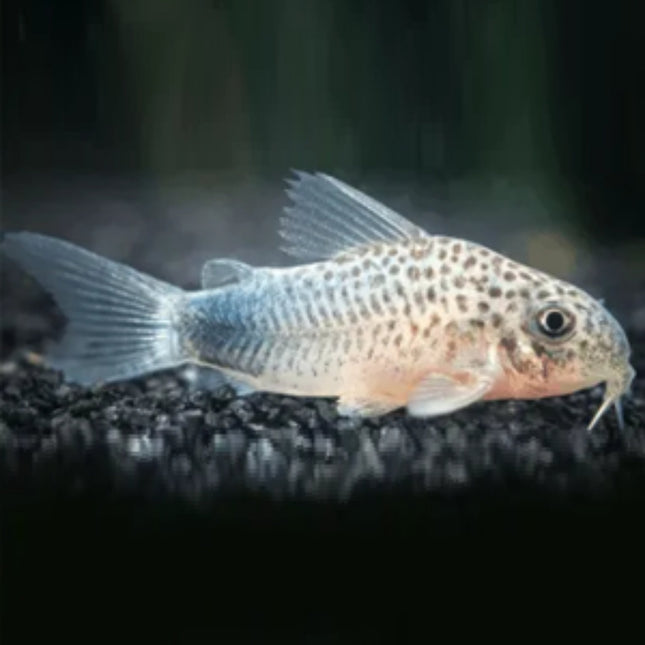
This very lovely and rare Cory Catfish is seldom available, especially tank-bred specimens! The Smudge Spot Cory Catfish (Corydoras similis), also known as the Violet Cory Catfish, is a very uncommon species that is native to Brazil. It is rare in the aquarium hobby, but is in high demand due to the striking dark violet coloration that it develops as it matures. It is a very animated, distinctively marked schooling fish that is perfect for the nano, community, and planted aquarium. The Smudge Spot Cory Catfish is a very peaceful schooling fish that is compatible with most nano aquarium animals, including dwarf cichlids and angelfish. It might prey on some smaller dwarf shrimp, but is safe with larger shrimp and most other peaceful ornamental invertebrates. It is a classic scavenger and will inhabit and feed at the aquarium floor, which should be comprised of sand or smooth gravel. Very coarse substrate can damage its delicate barbels and underbelly, so it should be kept in an aquarium with sand or very smooth gravel substrate. This fish is otherwise undemanding as it will accept most dry,frozen, and live foods. It is adaptable to most tropical freshwater conditions as long as standard regular maintenance is performed and sudden changes are avoided. What We Like About This Fish: Very peaceful and hardy addition to almost any aquarium Compatible with most adult dwarf shrimp and other invertebrates Thrives in schools in well-planted aquaria Distinctive coloration and group schooling behaviour. RECOMMENDED TANK PARAMETERS: Temperature: 68° - 81° F (20° - 27° C) pH: 5.5 - 7.2. Softer water is preferred, but this fish is somewhat flexible as long as sudden changes are avoided. KH: 0 - 15 dKH Minimum tank size: 15 gallons for a school of 6 CARE GUIDELINES: Diet: High-quality dry foods as well as live and frozen meaty foods. Variety is essential. Social behaviour: Peaceful; requires a school of 6 or more to thrive. Origin: Tank-Bred, but indigenous to Brazil Average adult size: 2.4 inches (6 cm) Average purchase size: 1 inch (2.5 cm) Reference and Picture from AquaticArts
$30.00
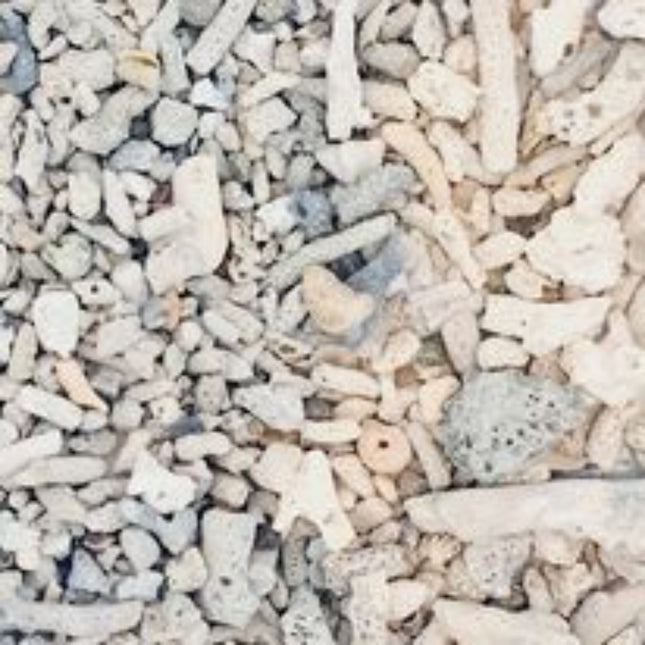
Crushed Coral is a highly effective, natural calcareous substrate designed for one primary purpose: to buffer aquarium water. Sourced from natural coral skeletons, it steadily releases calcium carbonate to maintain consistently alkaline pH levels and increase general hardness (GH) and carbonate hardness (KH). This makes it an essential filtration media for freshwater systems to buffer water, but can also be used for saltwater, reef, and African cichlid aquariums, where stable, hard water is non-negotiable for the health and survival of aquatic life. Key Benefits: Stabilizes Water Chemistry: Naturally buffers pH to maintain consistently alkaline conditions, preventing harmful crashes and providing essential mineral content for hard water species. Promotes Vital Health: The gradual release of calcium carbonate is crucial for strong skeletal growth in corals and invertebrates, and for healthy shell development in mollusks. Superior Filtration Support: Its coarse, irregular texture prevents compaction, facilitates optimal water flow through the substrate bed, and provides a massive surface area for colonizing beneficial denitrifying bacteria. Eco-Conscious & Sustainable: Responsibly sourced to ensure the protection of vital reef ecosystems, allowing you to build a beautiful aquarium with a clear conscience. Unmatched Natural Aesthetics: Delivers the bright, reflective look of a tropical seabed or rocky lake shore, providing an authentic and visually stunning environment for your fish. Ideal For: All tanks requiring elevated pH and GH/KH Reef Tanks & Marine Aquariums African Cichlid & Rift Lake Biotopes How to Use: Rinse Thoroughly: Gently rinse the substrate in fresh water until runoff is clear to remove any dust. Determine Depth: A 1-2 inch layer is standard for most aquariums. Use a deeper bed (2-3 inches) if using with an undergravel filtration system. Place in Tank: Add the clean substrate directly to the bottom of your empty aquarium to form the base layer of your aquascape. Mesh bags are sold separately
$5.00 - $19.00
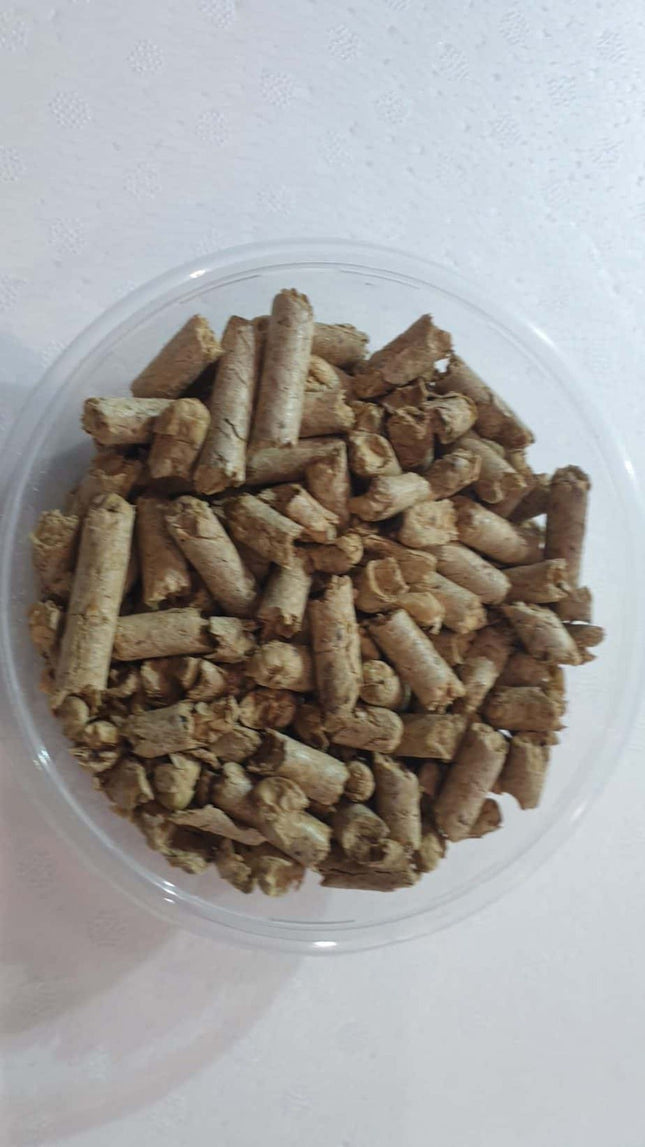
Shrimp Snow is used as a staple and as a treat for Shrimps They are made out of Soy Husks and do not fowl your water when you are feeding They are used primarily as a food when you go away or when you are lazy. If you haven't tried them before your shrimp is really missing out Please note that the packaging has been updated
$19.95

\nGROWTH PLUS is a unique koi food blend featuring montmorillonite clay, krill, and white fish meal, providing abundant marine proteins and minerals for growth. This formula is balanced with pea protein and high-purity wheat germ to ensure a varied and nutritious diet. When water temperatures are 60°F and above, feed your fish as much as they can consume in 5 to 10 minutes, two or more times daily.\n\n
$239.00

GROWTH PLUS is a unique koi food blend featuring montmorillonite clay, krill, and white fish meal, providing abundant marine proteins and minerals for growth. This formula is balanced with pea protein and high-purity wheat germ to ensure a varied and nutritious diet. When water temperatures are 60°F and above, feed your fish as much as they can consume in 5 to 10 minutes, two or more times daily.\n
$72.00

\nGROWTH PLUS is a unique koi food blend featuring montmorillonite clay, krill, and white fish meal, providing abundant marine proteins and minerals for growth. This formula is balanced with pea protein and high-purity wheat germ to ensure a varied and nutritious diet. When water temperatures are 60°F and above, feed your fish as much as they can consume in 5 to 10 minutes, two or more times daily.\n\n
$410.00

PREMIUM fish food is a top-tier maintenance, color, and growth formula featuring a unique nutritional coating and a blend of marine and plant proteins like white fish meal, krill, and spirulina. It includes essential minerals, vitamins, pre-biotics, and montmorillonite clay to support growth and digestion. For temperatures of 60°F and above, feed fish as much as they can eat in 5 to 10 minutes, two or more times daily.\n\n
$258.00

\nPREMIUM fish food is a top-tier maintenance, color, and growth formula featuring a unique nutritional coating and a blend of marine and plant proteins like white fish meal, krill, and spirulina. It includes essential minerals, vitamins, pre-biotics, and montmorillonite clay to support growth and digestion. For temperatures of 60°F and above, feed fish as much as they can eat in 5 to 10 minutes, two or more times daily.\n\n
$79.00

\nPREMIUM fish food is a top-tier maintenance, color, and growth formula featuring a unique nutritional coating and a blend of marine and plant proteins like white fish meal, krill, and spirulina. It includes essential minerals, vitamins, pre-biotics, and montmorillonite clay to support growth and digestion. For temperatures of 60°F and above, feed fish as much as they can eat in 5 to 10 minutes, two or more times daily.\n\n
$473.00

\nMARINE FX is a fish food highly enriched with freeze-dried copepods, natural astaxanthin, spirulina, and Antarctic krill to maximize the color and luster of fish and invertebrates. These ingredients provide natural pigments, minerals, and essential nutrients for vibrant coloration. Feed your fish only what they can eat immediately in a few minutes, 1 to 3 times daily, with smaller, more frequent feedings being recommended.\n\n
$42.00

MARINE FX is a fish food highly enriched with freeze-dried copepods, natural astaxanthin, spirulina, and Antarctic krill to maximize the color and luster of fish and invertebrates. These ingredients provide natural pigments, minerals, and essential nutrients for vibrant coloration. Feed your fish only what they can eat immediately in a few minutes, 1 to 3 times daily, with smaller, more frequent feedings being recommended.\n\n\n
$42.00

Features: MARINE FX is highly enriched with freeze-dried copepods (a marine crustacean rich in antioxidants, carotenoids and essential fatty acids), natural astaxanthin, pure cultured spirulina, and Antarctic krill. These ingredients contain natural pigments, minerals and nutrients necessary to maximize the color and luster of your fish and invertebrates. Usage: Feed your fish only as much as they will eat immediately in a few minutes, 1 to 3 times daily. Small, more frequent feedings are much safer and healthier than a larger, single feeding.\n\nIngredients:\n\nWhite fish meal, wheat flour, Antarctic krill meal, wheat germ, spirulina algae, pea protein, brewer's yeast, copepod meal. astaxanthin, montmorillonite clay, gum acacia, garlic, calcium carbonate, protease, beta glucan, Vitamin A Acetate, D-Activated Animal Sterol (D3), DL-alpha-Tocopherol (E), L-ascorbyl-2-polyphosphate (C), B12 Supplement, Choline Chloride, Niacin, Calcium Pantothenate, Riboflavin Supplement, Pyridoxine Hydrochloride (B6), Thiamine Mononitrate Inositol, Folic Acid, Menadione Sodium Bisulfite Complex (K), Biotin Cobalt Sulfate, Copper Sulfate, Ferrous Sulfate, Manganese Sufiate Ethylenediamine Dihydroiodide.\n
$445.00

MARINE FX is a fish food highly enriched with freeze-dried copepods, natural astaxanthin, spirulina, and Antarctic krill to maximize the color and luster of fish and invertebrates. These ingredients provide natural pigments, minerals, and essential nutrients for vibrant coloration. Feed your fish only what they can eat immediately in a few minutes, 1 to 3 times daily, with smaller, more frequent feedings being recommended.\n\n\n
$445.00

MARINE FX is a fish food highly enriched with freeze-dried copepods, natural astaxanthin, spirulina, and Antarctic krill to maximize the color and luster of fish and invertebrates. These ingredients provide natural pigments, minerals, and essential nutrients for vibrant coloration. Feed your fish only what they can eat immediately in a few minutes, 1 to 3 times daily, with smaller, more frequent feedings being recommended.\n\n\n
$80.00

MARINE FX is a fish food highly enriched with freeze-dried copepods, natural astaxanthin, spirulina, and Antarctic krill to maximize the color and luster of fish and invertebrates. These ingredients provide natural pigments, minerals, and essential nutrients for vibrant coloration. Feed your fish only what they can eat immediately in a few minutes, 1 to 3 times daily, with smaller, more frequent feedings being recommended.\n\n\n
$80.00

MARINE FX is a fish food highly enriched with freeze-dried copepods, natural astaxanthin, spirulina, and Antarctic krill to maximize the color and luster of fish and invertebrates. These ingredients provide natural pigments, minerals, and essential nutrients for vibrant coloration. Feed your fish only what they can eat immediately in a few minutes, 1 to 3 times daily, with smaller, more frequent feedings being recommended.\n\n\n
$112.00

MARINE FX is a fish food highly enriched with freeze-dried copepods, natural astaxanthin, spirulina, and Antarctic krill to maximize the color and luster of fish and invertebrates. These ingredients provide natural pigments, minerals, and essential nutrients for vibrant coloration. Feed your fish only what they can eat immediately in a few minutes, 1 to 3 times daily, with smaller, more frequent feedings being recommended.\n\n\n
$112.00

\nREEF VEGGIE FX is a specially formulated food for marine herbivores, containing a diverse blend of marine and vegetable proteins for a complete and balanced diet. It is enriched with natural astaxanthin, two types of spirulina, Antarctic krill, and freeze-dried copepods to provide essential nutrients and pigments. Feed your fish only what they can consume in a few minutes, 1 to 3 times daily, favoring small, frequent feedings for optimal health.\n\n
$42.00

REEF VEGGIE FX is a specially formulated food for marine herbivores, containing a diverse blend of marine and vegetable proteins for a complete and balanced diet. It is enriched with natural astaxanthin, two types of spirulina, Antarctic krill, and freeze-dried copepods to provide essential nutrients and pigments. Feed your fish only what they can consume in a few minutes, 1 to 3 times daily, favoring small, frequent feedings for optimal health.\n
$42.00

REEF VEGGIE FX is a specially formulated food for marine herbivores, containing a diverse blend of marine and vegetable proteins for a complete and balanced diet. It is enriched with natural astaxanthin, two types of spirulina, Antarctic krill, and freeze-dried copepods to provide essential nutrients and pigments. Feed your fish only what they can consume in a few minutes, 1 to 3 times daily, favoring small, frequent feedings for optimal health.\n
$445.00

REEF VEGGIE FX is a specially formulated food for marine herbivores, containing a diverse blend of marine and vegetable proteins for a complete and balanced diet. It is enriched with natural astaxanthin, two types of spirulina, Antarctic krill, and freeze-dried copepods to provide essential nutrients and pigments. Feed your fish only what they can consume in a few minutes, 1 to 3 times daily, favoring small, frequent feedings for optimal health.\n
$445.00

REEF VEGGIE FX is a specially formulated food for marine herbivores, containing a diverse blend of marine and vegetable proteins for a complete and balanced diet. It is enriched with natural astaxanthin, two types of spirulina, Antarctic krill, and freeze-dried copepods to provide essential nutrients and pigments. Feed your fish only what they can consume in a few minutes, 1 to 3 times daily, favoring small, frequent feedings for optimal health.\n
$80.00

REEF VEGGIE FX is a specially formulated food for marine herbivores, containing a diverse blend of marine and vegetable proteins for a complete and balanced diet. It is enriched with natural astaxanthin, two types of spirulina, Antarctic krill, and freeze-dried copepods to provide essential nutrients and pigments. Feed your fish only what they can consume in a few minutes, 1 to 3 times daily, favoring small, frequent feedings for optimal health.\n
$80.00

REEF VEGGIE FX is a specially formulated food for marine herbivores, containing a diverse blend of marine and vegetable proteins for a complete and balanced diet. It is enriched with natural astaxanthin, two types of spirulina, Antarctic krill, and freeze-dried copepods to provide essential nutrients and pigments. Feed your fish only what they can consume in a few minutes, 1 to 3 times daily, favoring small, frequent feedings for optimal health.\n
$112.00

REEF VEGGIE FX is a specially formulated food for marine herbivores, containing a diverse blend of marine and vegetable proteins for a complete and balanced diet. It is enriched with natural astaxanthin, two types of spirulina, Antarctic krill, and freeze-dried copepods to provide essential nutrients and pigments. Feed your fish only what they can consume in a few minutes, 1 to 3 times daily, favoring small, frequent feedings for optimal health.\n
$112.00
You have seen 144 out of 935 products